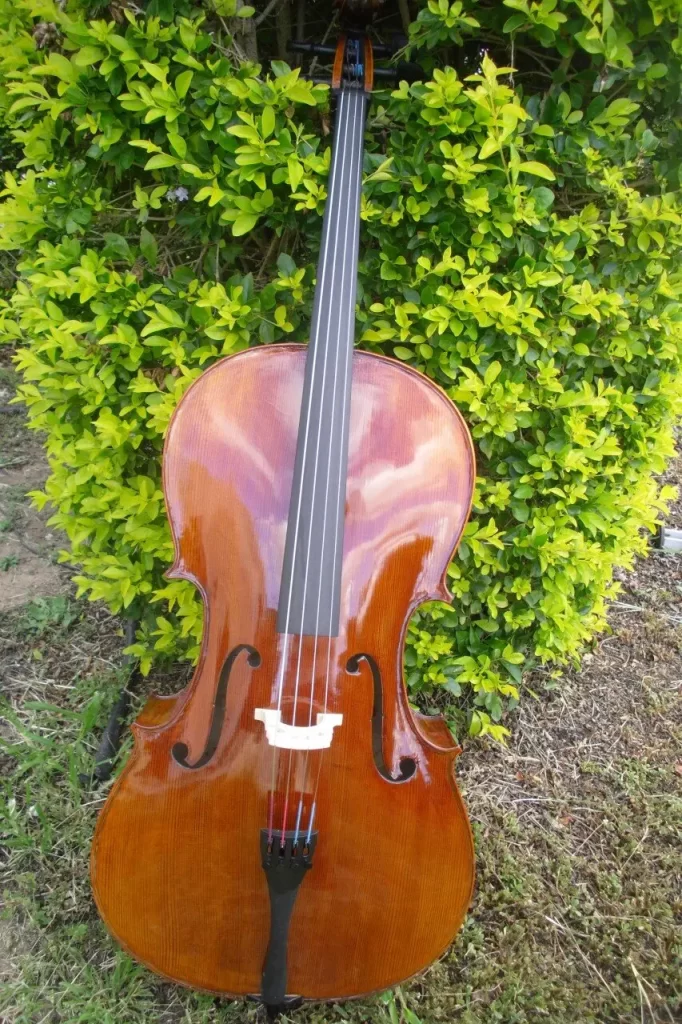What Makes a Good Beginner Cello?
- Home
- What Makes a Good Beginner Cello?
What should you look for in a beginner student cello?
When choosing a first cello for a beginner, it is important to invest in a decent instrument because the instruments tonal quality with encourage the student to practice and advance. A well set-up cello also maximises the ease of playing. This is true for both young starters or mature-aged beginners. Fortunately, it is not necessary to bust the budget in order to purchase a quality entry-level cello!
As with all string instruments, there are a few key aspects of the cello to consider when selecting your instrument:
- Appearance: the wood, varnish, and workmanship of the string instrument.
- Tone: an important factor for all players; the quality of the cello sound.
- Performance: this relates to the tonal projection of the instrument or sound volume.
- Condition: How well looked after (if second hand), and how well set up the instrument is.
The quality of workmanship is important, particularly where it contributes to a great sound. The choice of timber is also important although all cellos from Animato Strings, including beginner student cellos, are hand-carved using spruce for the top and maple for the back, sides, neck and scroll. All of Animato’s cellos have an ebony finger board.
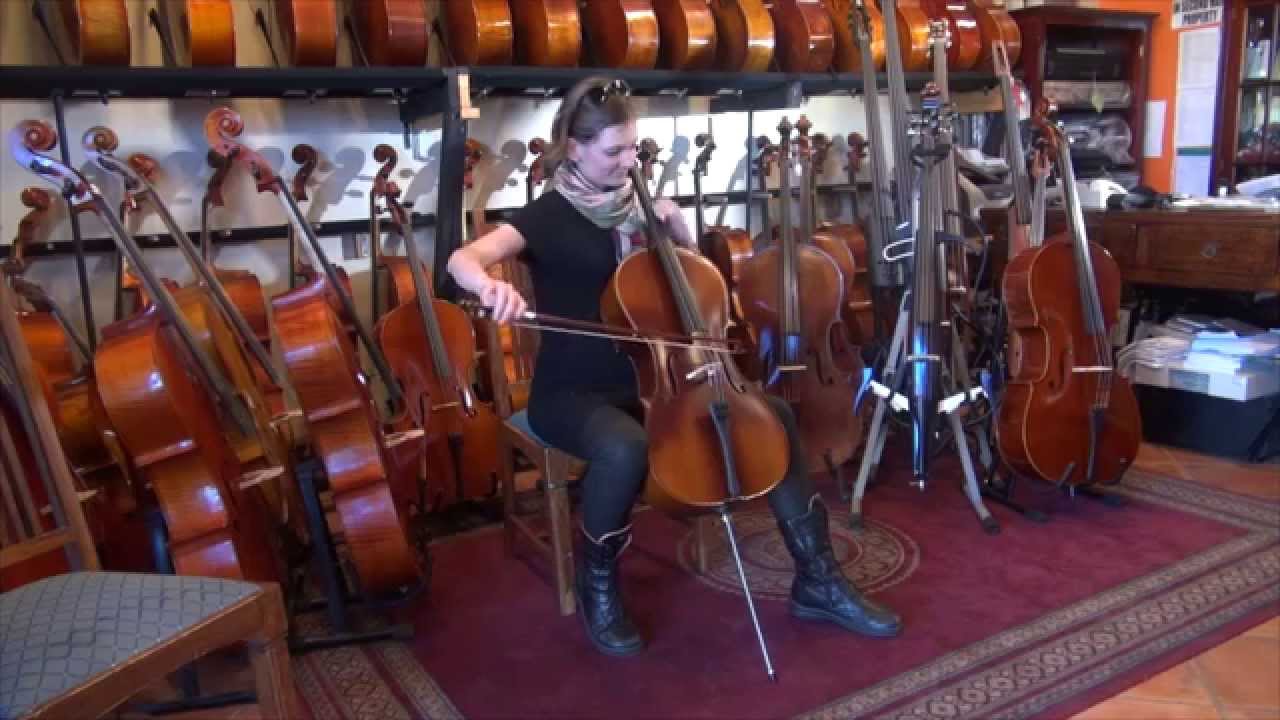
Second hand cellos?
It can be tempting to buy a used cello for sale, because entry-level cellos are about three times more expensive than entry-level violins. However, when second-hand cellos are bought from private sellers, the workmanship and condition of these cellos may not be apparent to the inexperienced purchaser.
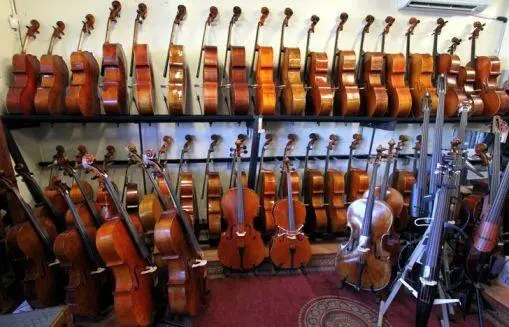
A second hand cello of poor quality, condition or set up can end up costing a great deal to remedy. This is particularly the case for entry-level cellos. A low quality cello may not even be worth fixing as the costs would be out of proportion with the value of the instrument due to poor materials used to make it in the first place, or due to badly undertaken repairs in the past.
However, if a second-hand cello was originally purchased from a string specialist store, then at least we know that it came from a reliable place.
Second-hand cellos that are purchased from Animato Strings have been reconditioned and carry a 3 month warranty. A second hand cello would typically come with new rosin, a second-hand bag, a second-hand bow and second-hand strings if they are still in good working condition. Of course, second-hand strings, bow and bag wear out sooner than new strings, a new bow and a new bag.
The reconditioning of second-hand cellos involves tasks such as replacing or straightening poor or warped bridges, readjusting the sound-post and other things that are related to the body of the instrument. The second hand cellos at Animato are those that have been traded in when cusomers are upgrading. As such they may be brands other than Animato’s Arco brand.
The Arco cello is Animato's entry level cello. This cello is known for its rich sound. A new cello from Animato carries a 12 month warranty - this also includes the bag and bow.
Cellos from a Specialist String Instrument store?
Purchasing a cello from a specialist store with a good reputation is the safest option in terms of satisfaction and ongoing support. Be wary of purchasing from non-specialist dealers. . A cello that has not been set up properly can be uncomfortable to play, and a poor quality cello is unlikely to have an enjoyable sound. This may result in a lack of persistence in practice and study.
A good seller will be more than happy to answer any questions you many have and negotiate which specific instrument best fits your individual needs as well as your wallet!
How do you check the condition of a cello?
The sound post must be positioned correctly to allow the viola to perform fully, and to support the arch of the viola’s body.
Cello body and varnish
The varnish in student cellos is not as important as the quality of its tone woods and the way it is carved. The golden to dark-brown varnish is aesthetically appealing to many musicians.
Sound post
It is important that the sound post is correctly positioned to ensure the cello performs with maximum projection and depth of sound. Nobody likes a cello that sounds tinny. The sound post also supports the arching of the cello, so it needs to be precisely fitted so that it does not cause any long-term damage to the front or back of the cello.
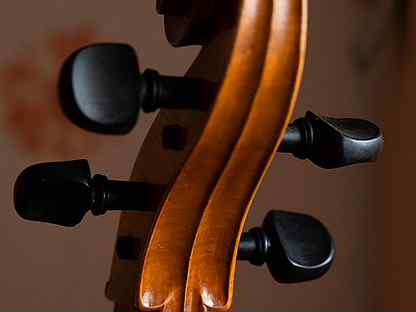
Bridge
It takes a long time to train someone to carve a good bridge! There are too many things to observe to list them here. The main features of a good bridge include:
- the best possible contact between feet and the arched body of the cello
- the thickness of the bridge
- the height
- the curve
- the even spacing and correct depth and width of the grooves in the bridge
If the bridge is too high, it will be hard for the fingers to press them down. If it is too low it will make the strings buzz as the vibrating strings will hit the finger board.
Neck and scroll
Although the scroll is traditionally for decorative purposes, it is important that the maple neck of the cello is straight, and that the glued-on fingerboard is made of ebony. The ebony of the fingerboard is largely in responsible for keeping the neck straight as ebony is harder than maple.
Pegs
The pegs loosen and tighten the strings for tuning. Although most peg problems can be solved with products such as peg paste, bad pegs can be tight or slippery, which makes tuning the instrument difficult.
Fingerboard
strings) does not need to be higher than necessary to make the playing as comfortable as possible. If the fingerboard is not properly planed, either the action will be overly high or a buzzing will happen from the vibrating cello strings as they hit the fingerboard.

Nut
The string grooves in the nut must be at the correct depth, width and distance from its neighboring grooves, similar to to those on the bridge, to ensure user-friendliness, accuracy when pressing down the string, and to prevent discomfort or unpleasant buzzing.
Label
The label may be helpful if you plan on reselling your instrument when you need the next size up. However, Animato is happy to trade in when the time has come to upgrade.
Tail piece
The tail piece alters the tonal qualities of a cello as well. These days, the standard tail piece for all cellos is made of carbon fibre because of its lightness, durability and precision. Because of the light weight it does not interfere with the resonance of the cello.
What size cello is right?
Trying to learn to play the cello on the wrong sized instrument makes it hard for beginners to learn to play and develop correct technique.
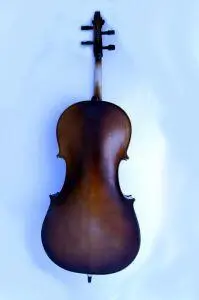
Because of this, it is important to select the right cello initially so that your posture and technique does not compensate for an ill-fitting size.
For most individuals around average height we recommend using the following guidelines: (Top shows age in ascending order, bottom show corresponding cello size)
| 3-4 | 4-5 | 5-8 | 7-10 | 9-12 | 12+ |
|---|---|---|---|---|---|
| 1/16 | 1/8 | 1/4 | 1/2 | 3/4 | 4/4 |
What do we recommend?
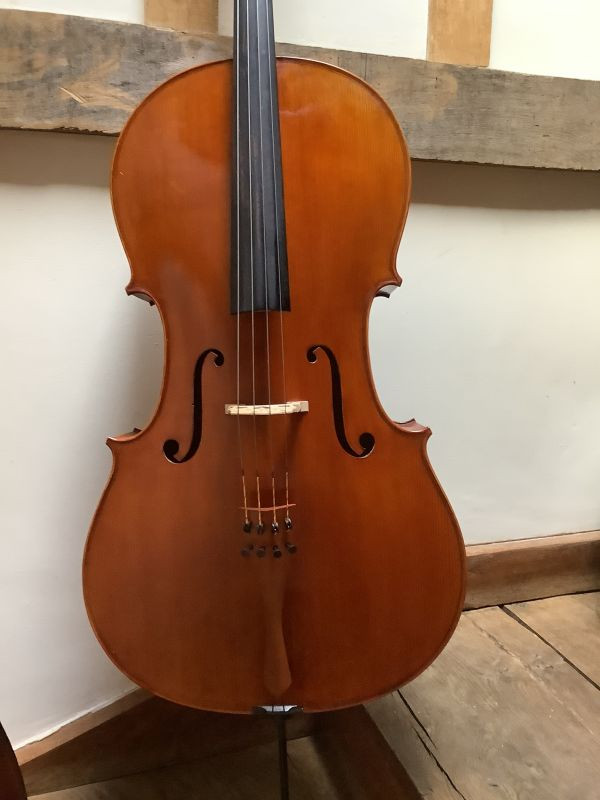
With a solid spruce top, maple back and sides, as well as a Belgian-style bridge and genuine ebony fittings, you will find it hard to believe the low cost of this quality instrument.
This outfit includes: – the Arco cello – Soft Bag – Sturdy Entry Level Bow – Rosin.
The Arco cello is available from size 1/16 to 4/4, catering to beginners of all ages. Although the price is low, the remarkable sound of the Arco makes it suitable for both first-time players and intermediate students.
The Arco cello outfit comes with a full year warranty.
It is important to note that each cello has its own tonal personality and has been adjusted for optimum tonal performance and playability.

